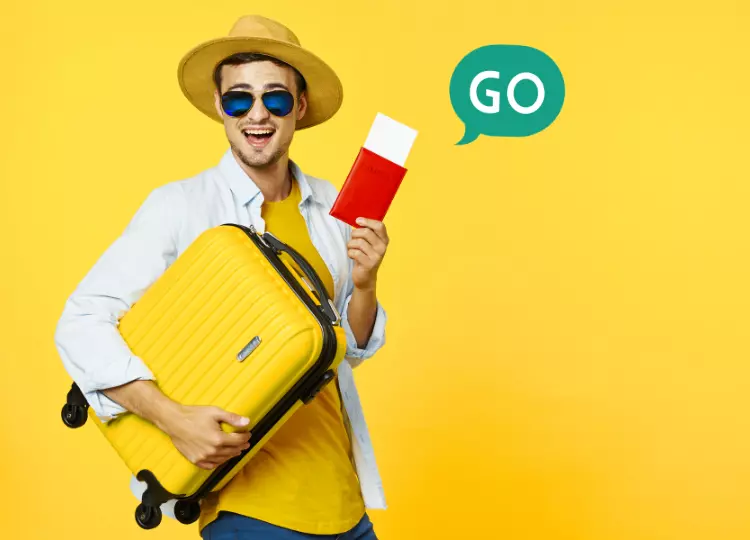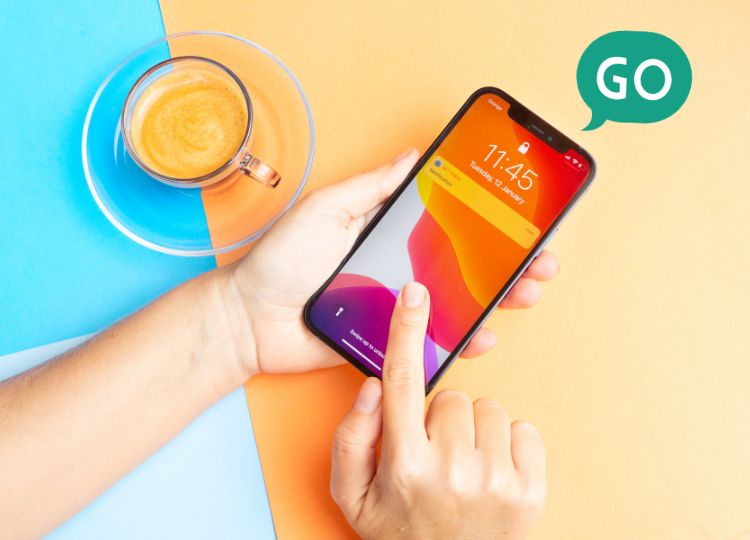6 trends in travel marketing
 Aleksandra Kozioł
Aleksandra Kozioł
The Covid-19 pandemic has significantly affected the global travel industry. Thankfully, as we're nearing the end of it, hotels, restaurants, and tourist attraction operators are coming back to life. Of course, that's good news. However, in order to compete in the post-covid world, travel companies need to adapt to new market trends and customer expectations. And that's what we're going to talk about today.
In this article, you will find a list of six critical trends that will affect the whole industry in the coming months and years. If you want to thrive in the market and attract more and more tourists – that’s your recipe for success.
Loyalty programs
Granted, they have been around pretty much always. Now, though, the importance of loyalty programs is far more important. People are craving travel, but they still look for the best deals. In the recent study published by Expedia Group, respondents indicated what's important to them when traveling:

Image source: eHotelier
Take a look at what’s important to modern travelers – the possibility to get a full refund, low pricing, flexible policies, first-class benefits, etc. All of that can be provided with a well-thought-out loyalty program. Of course, there will be some revolution in the way these programs work. According to Expedia Traveler Value Index 2022, travelers will use loyalty points accumulated during the pandemic to help them fund trips. The authors of this report indicated six countries that are especially likely to cash in loyalty points for travel:
Mexico: 55% of answers
Australia: 47%
US: 46%
France: 36%
Canada: 32%
Simultaneously, people in these countries are usually eager to travel internationally, too. Therefore, international loyalty programs will be particularly valued. Let’s take a look at some examples of such programs.
TRIPADVISOR PLUS
One of the biggest advantages of this program lies in its flexibility. With the Plus membership, users can get discounts on hotels, rental cars, flights, travel experiences, and more. Tripadvisor launched its Plus program back in 2021. This travel subscription service costs only $99 a year, which is a reasonable price for a majority of regular travelers [source: CNBC].

Image source: Hospitalitytech
BOOKING GENIUS
Booking.com, one of the biggest hotel booking platforms in the world, has decided to create something similar. Their Genius program enables tourists to get discounts for their stays (up to 20%!), but also free breakfast, room upgrades, and priority support. Access to Genius Level 1 (10% discount) is free and available for a lifetime. Over 390,000 properties are participating in this program!

Image source: Booking.com
Direct communication with travelers
In the post-covid world, direct communication is more important than ever. Hotels and other companies operating in this industry have a range of means and channels that enable constant communication with tourists. Here, we want to mention two interesting channels:
Web push: These short notifications can work miracles in the travel industry. Hotels and tour operators use them to distribute promo codes, increase user retention, decrease booking abandonment, and grow a subscriber database (which can be next used to exploit the second channel). Discover more about diverse web push applications in the travel industry.
Newsletters: With a grown subscriber database, you can use newsletters for the same purposes. Of course, each newsletter has to be interesting and engaging. That's why you need a good content marketing strategy. Web push and newsletter align together to create one comprehensive direct communication strategy with your past, current, and future guests.
Remarketing
Here, we have to go back to web push for a few moments. Remarketing is a powerful strategy aimed at reaching users that already know you. Travel companies try to get to users who have already visited their website or even started the booking process but never finished it. Of course, reminding them about your offer or website is one thing. Making it captivating is the other. To increase the effectiveness of your remarketing efforts, try these methods:
Add at least one captivating photo (after all, the phrase "a picture is worth more than a thousand words" did not come out of nowhere!)
Give access to a special, time-limited offer and make the most of the FOMO effect
Refine your copy and CTA (pictures sell, but words do, too!)
Show the best tourist attractions and places worth visiting in your country or region
There are diverse remarketing channels that will enable you to reach these users, including Google Ads and Facebook Ads. But we want to turn your attention to web push as a perfect remarketing tool. Here’s how it could work in the travel industry:
This review comes from Booking.com. The user sees who stayed at the hotel (so they know it was a real person and not a bot), for how long, and when. There is an overall rate (7.0/10), and the review is divided into two sections – what was good and what was bad. This way, the review is more comprehensive and authentic (after all, rarely everything is perfect, right?).

User-generated content (UGC)
That’s the next thing you ought to think about. User-generated content offers several important benefits:
It helps you attract more customers (so-called social proof)
It vitally supports your SEO efforts
It makes your website and social media profiles more authentic and vivid
In the travel industry, UGC revolves around reviews (hotels, restaurants, tourist attractions, bars, rental companies, etc.) and tips (how to get there, what to see, where to go, what to buy). Undoubtedly, UGC can be a vital source of knowledge for other tourists and a confirmation of your high-quality offer. Take a look at a few examples of user-generated content in travel marketing:

This review comes from Booking.com. The user sees who stayed at the hotel (so they know it was a real person and not a bot), for how long, and when. There is an overall rate (7.0/10), and the review is divided into two sections – what was good and what was bad. This way, the review is more comprehensive and authentic (after all, rarely everything is perfect, right?).

The second review comes from Google My Business. The review has an overall rate, but three sub-rates for rooms, location, and service are also included. The hotel also used the opportunity to publish a short answer to this comment and thank the visitor for it. That's what you should do as well.
You should make sure UGC is visible on your website, social media profiles, and other places like Airbnb, Booking.com, Yelp, Tripadvisor, and Google My Business. Although the list is quite long, this way, you can reach different users and attract more people to stay at your place or visit your country/region.
The role of SEO is on the rise
When you take a look at Google Trends, you will quickly see that people use this search engine to look for hotels (red line) and travels (blue line), and their interest is quite constant (there was a drop in the beginning of 2020 for obvious reasons, but it didn’t last long).

And because your potential visitors look for you on Google, you have to make sure you have good exposure in the SERP (search engine result page). The best way to achieve this goal is through SEO. Frequently, hotels and other travel companies also use performance marketing to get better visibility in Google (via Google Ads). To go higher in Google, you need an SEO strategy, a content marketing strategy, and, of course, high-quality, unique content to attract Internet users.
How can you do that? It’s a story for a whole new article, but we actually talked a lot about SEO and SEO-related activities in our other blog post for the travel sector: Travel marketing: How to attract customers in the post-covid world. If you operate in the travel industry, that article is your must-have!
Virtual tourism
Lastly, we want to talk about something that wasn't even a thing a few years ago. Virtual tourism slowly becomes a trend thanks to the metaverse – an online reality made possible via technologies like AR and VR (or so-called XR – extended reality). And while metaverse is still in its infancy and many years will pass by until we have a fully-fledged virtual reality experience as we know it from the sci-fi movies, travel companies can already consider incorporating XR experiences into their offer.
With virtual tourism, you can provide your guests with:
A multi-sensory experience
The ability to explore the destination before visiting it
The possibility to travel for people who can’t travel (because of their disabilities or diseases)
Of course, we’re not quite there yet, but solutions like a virtual walk are available even today, and they can help your guests make an informed decision before clicking the “book now” button.
Summary: Make the most of travel marketing
We've just shown you six trends that will shape the travel industry in the coming months. We encourage you to monitor what's happening in the travel sector and answer to ever-changing customer expectations. And remember that effective ways that will enable you to reach users and interest them in your offer will always be valuable. Think about web push if you're looking for new communication channels. Our team is at your service! We will gladly show you how web push can be incorporated into your online marketing strategy.

Content Specialist @PushPushGo
Editor and writer. She is interested in media and new technologies.
Try PushPushGo to engage and connect with your audience.
Create an account and start testing!





